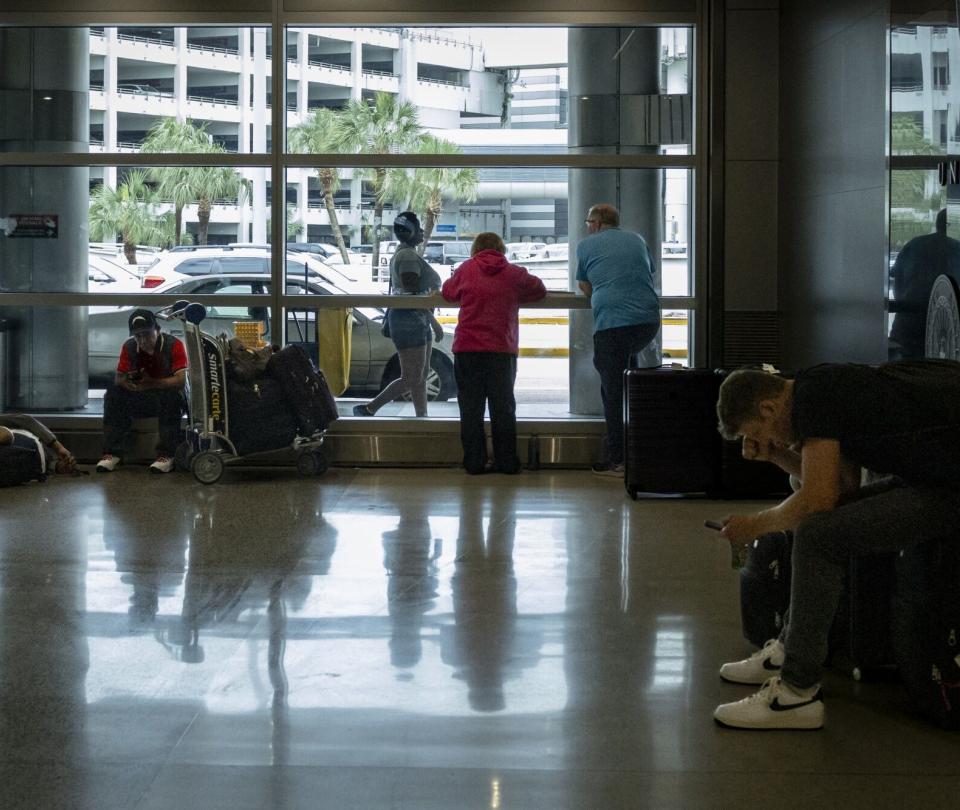It is the city? The neighborhood? The school they go to? Determining whether these factors influence whether a child will be poor or rich when they reach adulthood has been a dilemma that social sciences have been grappling with for decades. Also find out how you can break the cycle of hereditary poverty.
A huge clue in this field would come as a result of a social trial that began in 1994, when the United States Department of Housing and Urban Development launched the “Moving to Opportunity” program.
It was led by Harvard professor Lawrence F. Katz, who a year earlier had become chief economist at the Labor Department during Bill Clinton’s administration.
The goal was to conduct a large-scale field experiment with real people to understand the effects – across multiple generations – of moving to a neighborhood with greater opportunities.
Economic science wanted to understand whether low-income families benefited from moving to neighborhoods with greater amenities (that is, neighborhoods with higher quality schools, parks, libraries, and services).
The program began in 1994 in five large American cities – Boston, Baltimore, Chicago, New York and Los Angeles – and included 4,604 families housed in public housing in some of the poorest neighborhoods in the country, which also had high unemployment rates. and crime.
The idea was to find out if helping randomly assigned families move to a better neighborhood would benefit them financially.
The bill was approved by Congress after the Los Angeles Riots of 1992. That year saw a major outbreak of violence in the city, including looting and arson, in response to the acquittal of four white police officers who brutally beat the police officer. African-American Rodney King, who was stopped for speeding.
As a result of several days of civil protests, more than 50 people were killed, some 2,300 were injured, and thousands were arrested.
“No justice, no peace,” protesters shouted, with a strong feeling that the Los Angeles police were practicing racist brutality against African Americans and Hispanics.
About 1,100 buildings were affected and total property damage amounted to about $1 billion, making the riot one of the most devastating in U.S. history.
“Congress felt a little responsible and passed a bill with some money for the experiment in the neighborhoods,” Katz said in statements reported on the IMF website.
According to the IDEAS bibliographic database (obtained from the economic repository Research Papers in Economics), Katz is ranked 67th among the most cited economics scholars of all time.
“This places him among the top 0.1% of researchers,” say David Autor, from MIT, and David Deming, from the Harvard Kennedy School, in a paper from August 2023.
“Moving to Opportunity” takes off with this context. And with its results and the modification of housing policies at the federal level in the United States would come what is known as “the Katz effect.”
Families were randomly assigned to one of three groups: One was offered a voucher to pay for rent on a home with the condition that it could only be used to move to a low-poverty neighborhood.
The second group received a voucher to pay the rent for a home located wherever they wanted.
And the third group, the control group, had access to a council flat located in a disadvantaged area, which was the place of origin of the participants in the experiment.
“For example, in New York the control group remained in subsidized housing in Harlem, a large part of the recipients of the unconditional housing voucher settled in the South Bronx in a relatively poor area but not as poor as Harlem,” explains the economist and professor at the University of Warwick, Manuel Bagues in the blog “Nothing is free.”
“And a large number of the conditional housing check recipients moved to a residential area in the northern part of the Bronx,” he explains.
Initial results of the program were mixed. Positive results were recorded in terms of the health of the participants, reduction in the concentration of poverty and satisfaction with the new housing conditions.
However, no significant effects were observed on adult employment or children’s education.
And the initial project only analyzed the result of the experiment in adults.
A more exhaustive analysis of the data and follow-up of the children in that program were needed to reach more forceful conclusions than the first ones.
So in 2015, Raj Chetty, Nathaniel Hendren, and Lawrence F. Katz himself. conducted a review of the original study in which they followed children of families who moved to a new neighborhood with Moving to Opportunity.
The three together published the paper “The effects of exposure to better neighborhoods on children: new evidence from the Move to Opportunity experiment.”
“The initial evidence, which concerned only the results of the adults in the study, was inconclusive. But follow-up work done by Larry Katz, Raj Chetty and others showed that children from families who moved to neighborhoods with many amenities experienced substantial improvements in their education and income,” sociologist David B. Grusky told BBC Mundo. , director of the Center on Poverty and Inequality at Stanford University, who was not involved in Katz’s research.
Grusky believes the experiment offered the most compelling evidence that neighborhoods really matter in children.
“The results prompted policy changes at the U.S. Department of Housing and Urban Development to ensure that when families get a voucher, they actually use it to move to high-amenity neighborhoods,” Grusky recalls.
What the second part of the study established is that the younger the children were when they moved, the better they did: they were less likely to become single parents and more likely to go to college and earn more.
The original research had not been able to follow the economic outcomes of younger children because not enough time had passed.
“With the gift of time, Opportunity Insights (OI) revised the MTO study in 2015 with new census data and tax records to explore long-term outcomes among young children,” they explain from the Harvard Center on Inequality. Raj Chetty leads.
By reanalyzing the data, OI found that offering vouchers to move to lower-poverty neighborhoods to families with young children can reduce the intergenerational persistence of poverty and ultimately generate positive returns for taxpayers.
“This reexamination of the MTO results demonstrated how longer-term evaluation, where policy impacts accumulate over time, can produce different insights,” they say.
“If the MTO evaluation had stopped with the initial conclusions, the policy would have been considered to have limited impact, when, in fact, our research shows how poverty deconcentration policies have a substantial impact for young children who they move to areas of lower poverty,” they add from Opportunity Insights.
For Chetty’s team, it is clear that the experiment had significant impacts on participants, particularly children, suggesting that MTO contributed to reducing inequality.
“However, looking at the broader picture of upward mobility in the United States, we see that the probability of children going on to earn more than their parents has decreased in recent decades from around 90% for children born in the 1940s to 50% for those born in the 1980s,” Chetty’s team highlights.
So while MTO and the subsequent research and policies it has inspired have made progress in addressing inequality, there are many factors that contribute to disparities in outcomes.
That is, we must not forget that the quality of neighborhoods and schools, networking and other environmental and institutional factors shape a child’s trajectory from an early age.
“There are two types of inequality at play in the United States. This country has decided, first, to allow households to have wildly unequal incomes (i.e., “household inequality”), Grusky explains.
“And we have decided, second, to allow neighborhoods to be wildly different in the quality of public services (e.g., schools, parks, libraries, jobs, networks) they provide to their residents (i.e., “spatial inequality.” ),” explains Grusky.
“We often forget how massive that second type of inequality – spatial – is in the United States,” he adds.
“The MTO experiment was important because it sought to evaluate the effects of that second type of inequality on the opportunities offered to children. The key question here is: if we eliminated that second type of inequality (without also addressing the first), would we see a substantial reduction of existing inequalities of opportunities?”, he points out.
For him, the key to the entire experiment is that it highlighted that economic science and public policies should evaluate whether mechanisms really need to be put in place to reduce inequalities in this second – spatial – form of inequality.
David Cuberes, a professor at Clark University and consultant to the World Bank, the International Monetary Fund and the Inter-American Development Bank, believes that the project had an impact beyond the decade in which it was carried out.
“First, because of the methodology: the idea was to randomly select a group of poor families in poor neighborhoods and move them to a richer neighborhood. That it is random is essential so that there is no self-selection or selection based on some variables,” he tells BBC Mundo.
“If this is not done, it could be that the most motivated poor families would be the ones that moved and then it would not be clear if they improve due to the change of residence or due to other factors.”
Because the housing voucher program in the United States is so small, economists agree that it has only a trivial effect on inequality.
But for Grusky, “the very important question that remains at stake is whether we should interpret the results as indicating that we should move all low-income households to existing neighborhoods with high amenities, or whether we interpret them to mean that we should equalize amenities in all neighborhoods (that is, eliminate – or at least reduce – spatial inequality)”, he concludes.
Click here to read more stories from BBC News Mundo.
You can also follow us on YouTube, Instagram, TikTok, X, Facebook and our new WhatsApp channel, where you will find breaking news and our best content.
And remember that you can receive notifications in our app. Download the latest version and activate them.














Add Comment